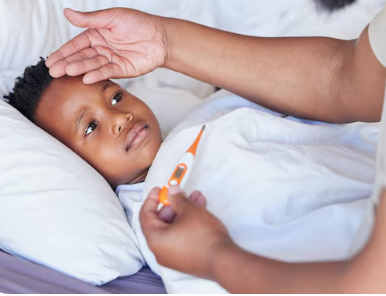To School or Not to School: A Sick Kid Checklist
School is in full swing! Which means lots of laughs in the lunch room, fun science class experiments, games in the gym, field trips, lots of extracurriculars and more. It also, unfortunately, means little grubby hands passing around germs during all of those activities. There are some preventative measures that can be taken to keep kiddos healthy, but once a sickness begins to rear its ugly heads, a choice has to be made: to send them to school or to not send them to school. Afterall, it could just be autumnal allergies! And what about if they aren’t even running a fever?! What if they are faking because they are worried about taking a test?! Don’t worry, we chatted with an expert and have answers to the most asked school-related sickness questions.
Staying Healthy as Preventative Care
There are a few everyday habits that can help children maintain good overall health. Eating a balanced diet, drinking plenty of fluids and taking a multivitamin is a good start! Staying active while also getting enough sleep are also helpful habits that benefit everyone’s health. It isn’t a bad idea to remind children (regardless of their age) that handwashing, and more specifically proper handwashing is very important! This means wetting the hands, applying soap, and scrubbing all surfaces of the hands—fingertips, too—for at least 20 seconds before rinsing and drying. Finally, a tricky one for younger kiddos: avoiding touching one’s face is a good way to keep germs at bay.
Dr. Felicia Scaggs Huang, MD, MS, is a Cincinnati Children’s Hospital and Medical Center pediatrician who also serves as the system’s medical director for Infection Prevention Control. As someone who specializes in infectious diseases, she also notes that, “ It’s important to make sure your kids are up-to-date on vaccines before going back to school. This includes getting an annual flu vaccine in the fall. Vaccines are safe and effective.” Furthermore, Dr. Scaggs Huang is a mom who relays, “I know that my children are much less likely to get a serious infection from germs that cause bacterial pneumonia or meningitis, chickenpox or measles because they are vaccinated.”
The Stay-Home Checklist
There are a few indisputable, “You are definitely staying home from school today” situations. These include:
- Fever
- Diarrhea
- Vomiting
- Severe cough and cold symptoms
First up, fever. “A fever is a temperature greater than 100.4 Fahrenheit. When your child’s body detects an infection, their temperature may rise to help fight it.”, Scaggs Huang informs. “Daily fever for more than a few days, breathing hard and fast, and difficulty staying hydrated are all signs that there might be something more serious going on that your doctor should check out.”
Next, diarrhea. Simply put, a student cannot learn if they are in the bathroom instead of the classroom. Beyond not feeling well and not being capable of learning, diarrhea is also a symptom of contagious sicknesses such as viral gastroenteritis.
Likewise, students who have vomited more than twice within a 24-hour period need rest and hydration from the comforts of home. Vomiting at school spreads germs and is downright stressful for the student.
Finally, sniffles and coughs happen. A mild case of the sniffles is probably okay for a child to go to school. However, Scaggs Huang suggests that, “ if your child was up all night with a bad cough, he or she may not feel well enough to learn in class.”. If the sniffles and cough are accompanied by a fever? That, too, means some time spent learning at home.
Keep Your Sick Kid from Getting Even Sicker
Ever notice that sicknesses sometimes fall like dominoes, one after the other? A cold, then a stomach thing, and then now a bout of pink eye?! Unfortunately, misery loves company. Sick children have weakened immune systems, which means they are more likely to pick up additional sicknesses. Keeping sick kids at home keeps them from catching even more sicknesses.
Returning to School
Many schools have a 24-hour rule when it comes to coming back to school. Once a student is 24-hours fever-free and their symptoms are decreasing, it is probably okay to head back to school. Go by the book and “check with your school about its illness policy, as (those) can vary,” says Scaggs Huang.
A checklist and checking the school handbook is helpful in knowing when kids should stay home sick. But also, parents just know their kids, right? As a parent, you know the glassy eye look, the clammy feeling on their skin, a certain tone of voice, and yes, some parents report they can even smell when their kid is sick. So of course, go by the books when it comes to keeping home your sick kid… but also… trust your gut.
Be well and wash those hands!
Cincinnati Family Magazine





